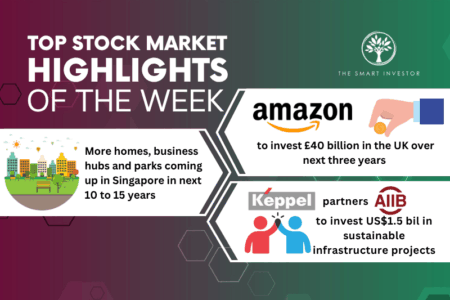How much should you pay for a stock to get a 10% return? In this article I explore a valuation method that helps me find just that.
The dividend discount model
First, we need to understand that the core concept of investing is that we are investing to earn a stream of future cash flows. Ideally, the amount we receive in the future should exceed the amount we invest today.
In this exercise, I’ll make one assumption: We are long term “buy and never sell investors” who make our money through the cash a company returns to shareholders as dividends.
Using this assumption, we should use the dividend discount model to value a stock. A dividend discount model discounts all future dividend income back to the present. It also assumes that you can reinvest the dividend at a rate similar to the discount rate.
Achieving a 10% return
So how do you get a 10% return? Let’s start with a simple example. Suppose a company will pay $1 per share in dividends for 10 years. At the end of the 10 years, it closes down with no liquidation value.
In total, you will receive $10 per share in dividends.
Using a dividend discount model, and discounting all the dividends to the present day at a 10% discount rate, we can calculate that the price to pay for the stock is $6.14. You can find the calculation in this spreadsheet.
Just looking at the price alone, it may seem strange that the dividend yield that you are getting is more than 10%.
At $6.14 per share, you will be earning a dividend yield of 16.3% but your annual return is still 10%. This is because the company closes down after 10 years and your initial capital will not be returned to you. To make up for that, you need to generate more than 10% in your annual dividend yield just to make a 10% annualised return.
More durable companies
In the above scenario, the company is not durable and is only able to pay you a dividend for 10 years. But for more durable companies, you can afford to pay more to achieve the same return.
For instance, there’s a more durable company that pays $1 per share in dividend for 20 years before closing down. In this scenario, you can pay $8.51 per share to earn a 10% return.
The more durable the company, the more you can pay. If a company can pay you $1 per share in dividend for eternity, you can pay $10 per share to earn a 10% yield and a 10% return.
Vicom – a no-growth company
An example of a steady but no-growth company is Vicom (SGX: WJP), which provides car inspection services in Singapore. It is a stable business as Singapore’s law requires vehicles to undergo regular inspections for road-worthiness.
Vicom, with its longstanding history, is also trusted by Singapore’s authorities to provide these inspection services, making it difficult for competitors to encroach into the space. But there is limited opportunity for Vicom to grow as the authorities regulates the number of vehicles given entitlement to be owned and driven in Singapore, resulting in zero vehicle-growth in Singapore for many years. In addition, the inspection fees are also likely regulated by the government, ensuring that consumers are protected from price gouging.
As a result, Vicom’s annual net income has hovered around S$25 million for years. The company also pays out around 100% of its net profit to shareholders.
Given all of this, as well as assuming that Vicom’s business can sustain for a long period of time and we want a 10% annualised return from owning Vicom’s shares, Vicom’s value should be S$250 million, representing a dividend yield of around 10%. Vicom’s current market cap is around S$450 million, which means that shareholders will earn less than a 10% rate of return.
Amphenol – a growth stock
Amphenol Corporation (NYSE: APH), a company based in the USA, designs and manufactures electronic connectors and sensors. Unlike Vicom, Amphenol has a track record of growing revenue and earnings per share while paying a growing dividend.
Since 2011, Amphenol’s revenue and earnings per share has compounded at 10.5% and 13% per year, respectively. In addition, the company’s dividend per share has grown from US$0.02 per share in 2011 to US$0.83 per share in 2022, for an annulised growth rate of 40%. Amphenol’s business can likely continue to grow at a steady rate if the company continues to acquire other companies for growth.
How much will you pay for its stock? Let’s assume Amphenol will pay US$1 per share in dividend in 2023 and grow that dividend at 9% per year for a long period of time.
In this case, using a dividend discount model, we can calculate that to earn a 10% return on investment (assuming no dividend withholding tax), we will need to pay around US$109 per share. My calculation can be found here.
You may notice that the dividend yield based on the price we are willing to pay is only 0.9%. Yet, we can still make 10% a year because the dividend that we will collect in future years grows over time.
Using the model
This model can be applied to all companies as long as you can predict its dividend stream. However this model only works if you are going to be holding the company for the full duration of its lifespan. If you intend to sell the shares to someone else, the share price that you are able to sell the shares at depends on the buyer’s own required rate of return.
This can be influenced by a range of factors, such as the risk-free rate at the time of the sale, or the state of the economy.
The model also assumes that you can predict with strong certainty the timing and amount of dividends. In practice, this may be hard to predict for companies without a history of dividend payments.
Nevertheless, this framework provides me with a clear way of thinking about valuation and gives me a sense of how I should approach valuing companies.
Note: An earlier version of this article was published at The Good Investors, a personal blog run by our friends.
Our beginner’s guide to investing is finally here! Many investors took years to understand the principles inside, but you can have it all in one afternoon. If you have just started investing, download our free guide today so you can catch up quickly. Click here to download now.
Follow us on Facebook and Telegram for the latest investing news and analyses!
Disclosure: Jeremy Chia does not have an interest in any of the companies mentioned.





